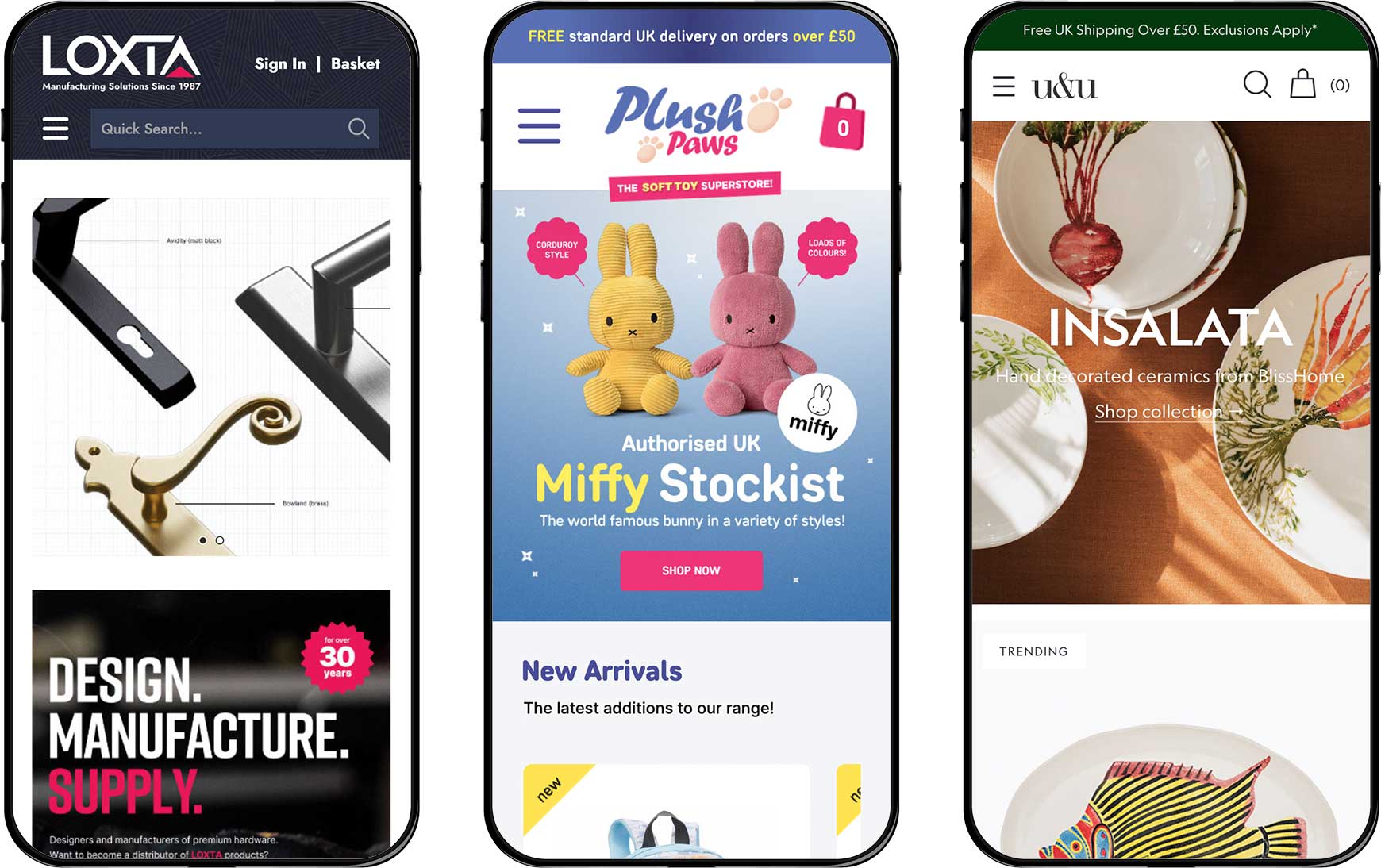As mobile use grows day by day all over the world, businesses concentrate on creating mobile content that their target audiences will be receptive to. When it comes to designing mobile content for different markets, say the UK and the US, more nuance is needed in approach. Cultural preferences, behavioral trends, and even differences in language usage can differ in how the content is accepted between the two regions. Here, we will discuss some key differences in designing mobile content for both the UK and the US, some common mistakes to be avoided, and best practices in creating mobile content that engages the user on both sides of the Atlantic.
1. Understand Cultural Differences in Mobile Usage
It is important to properly understand the deeper cultural nuances influencing mobile usage in both countries while designing mobile content for the UK versus the US. British and American users usually have different expectations and preferences when it comes to their mobile content. A host of design adjustments can thus be made based on this notion in order to compel better user engagement.
a. UK Mobile Usage Preferences
In the UK, mobile users are more oriented toward efficiency and practicality in browsing and shopping. A British audience needs just clear information and an easy user path. UK consumers do research on their mobile devices before making a purchase more than any other audience in the world-especially for big-ticket items. British users also have a strong preference for fast access to local content; therefore, location-based services are handy and return useful information, such as directions, local offers, or opening hours.
b. US Mobile Usage Preferences
US mobile users like highly visual content and are more permissive regarding push notifications and personalized messages. Most American users would be attracted to bold, eye-catching visuals and interactive means of. While they, too, would rather have a seamless experience on the sites, US mobile users are more inclined to spend time with entertaining content on social media and video streaming apps. For brands, this means that an immersive and engaging mobile experience resonates well with American audiences, especially when the interactive components might include gamification or personalized recommendations.
2. Differences in Language and Tone
The second significant determinant is the variety of language, which impacts while creation of mobile content for either UK or US target groups. Although both countries operate in the English language, there are certain key differences in their vocabulary, spelling, and even tone, which may impact how your message will be received.
a. Vocabulary and Spelling
While developing the content, use either British or American English, whichever best suits the target audience. For example, British English would require words like “petrol station,” “biscuit,” and “lift,” while American English would use the words “gas station,” “cookie,” and “elevator.” Also, not to mention spelling: “color” versus “color,” “center” versus “center,” and so forth. Consistency in tone is essential to establishing credibility with your audience because mismatches in vocabulary or spelling can lead to confusion or destroy your credibility.
b. Tone and Style
This means that British audiences tend to like a more reserved and understated tone, even when it comes to mobile content. Humor is quite fine, but it has to be subtle and relatable, rather than over-the-top. On the other side of the ocean, American users often respond more to highly enthusiastic and directly led tones. In marketing to the US, one is going to drive much higher levels of engagement through the use of motivational and positive phrasing. Adapt the tone to your audience’s expectations, so you do not alienate prospective users with language that is out of place.
3. Design for Local Preferences and Behaviours
Design elements that prove effective for mobile users in one country are less effective elsewhere. When designing mobile content for local preference considerations in the UK and the US, here are some considerations:
a. Content Density
The British audience usually enjoys their content concise and easy to navigate. Too much clutter and noisy mobile interfaces only annoy a UK user who likes simplicity in design. In British users’ experiences, provide a clean, user-friendly interface with prominent navigation options where information is found quickly.
On the other hand, American users are more accustomed to content-rich interfaces and often feel comfortable dealing with many screen options. Targeting the US alone means one can afford to be a bit more flexible with the density of content on their platform, from including side menus to carousels to multi-layered navigation, as long as it is intuitive and well-structured.
b. Payment Preferences
Mobile commerce checkout may also vary between the two countries. Mobile browsers in the UK prefer secure, well-known payment options, including debit or credit cards and mobile wallets such as Apple Pay. Another very adopted and trustworthy channel in the UK is PayPal. Make these options visible and easy to use to create a smooth shopping experience.
While in the US, other similar means of paying for goods are in great demand, the trend of usage is also growing towards buying-now-pay-later services, by Afterpay and Klarna. If your target audience is based in America, consider integrating BNPL options since this demographic, especially young audiences, loves flexibility when it comes to making payments.
4. Best Practices in Mobile-First Design
This means that when developing mobile content for the UK and the US, one should consider the principles of mobile-first design best practices. This is because mobile-first design ensures your content is optimized for small screens, which, given the high usage of smartphones in both countries, is a key consideration. Here are some mobile-first best practices:
Responsive Design: This means your content should automatically adapt to screen size. Whether users are accessing your content on a smartphone or a tablet, your content should appear and function seamlessly.
Optimise Loading Times: UK and US users are used to content on mobile loading in a flash. Minimise file sizes of images and videos; use caching techniques to load pages much faster. Consider the use of lazy loading on images, ensuring the content loads while users scroll down, making the experience smoother for them.
Finger-friendly buttons mean designing the buttons and areas to click, which can easily be tapped, leaving enough spacing so that accidental tapping can be avoided. This will be more critical on the small mobile screens because it is pretty tricky to tap correctly on them.
Clear Call-to-Action: Ensure that your CTA is visible and understood by all. For example, a “Buy Now” or “Find Out More” should be highlighted on the screen and allow the user to proceed forward without having to scroll or search for it.
5. Avoiding Common Mistakes
Following are some of the common mistakes a person may make while optimizing their mobile content for better resonance in the UK and the US:
Localized Optimization Ignoring Local Preferences: What worked in one country may not work in another. For example, where a loud or overly bright visual might work in the US, that will be intrusive, or too in-your-face for UK users. House your designs and user experience according to the local taste.
Not Localising Language: The failure to use proper language and spelling can create an unprofessional tone. One should make sure to always use British English for audiences based in the UK, and American English for those in the US, to add some level of credibility.
Cross-device testing: For mobile content, cross-device testing is necessary for various devices running on Android and iOS operating systems. iOS brings in more users from the US, while Android is slightly ahead in the UK. Cross-operating-system tests are required to make sure your content works well across them.
6. Best Practices for Both Markets
Generally speaking, several best practices are implemented to engage audiences in both the UK and the US with mobile content:
Focus on Visual Storytelling: Visuals can be appealing across the board, so tap into high-quality images, videos, and graphics to help tell your story. Reflect cultural elements of each market through visuals, like location-specific landmarks, seasonal themes, etc.
Observe local trends: follow the trends of the country, as well as the local tastes. For example, for Black Friday in the US or for Boxing Day sales events in the UK, show seasonal topics to the local users.
Prioritize the users’ voices through the periodic gathering of user feedback in each country on how they use their mobile content. Conduct A/B testing to identify what works best, and insights in refining the design.
Conclusion
Designing mobile content for the UK and US markets involves consideration of cultural nuances, language differences, and user preferences. Knowing these differences will enable you to develop a mobile experience that best fits the needs of users in each country. Adapt to the tone and design features, and options for paying according to what each audience expects; use mobile-first design principles to ensure your content works and remains interesting to users. Done properly, you can assure maximum engagement and communicate meaningfully through both markets.



